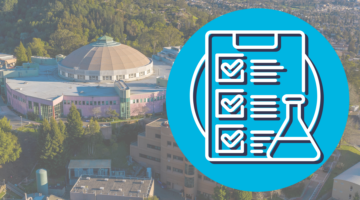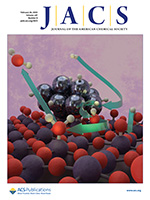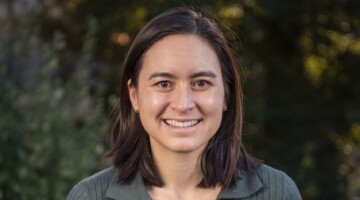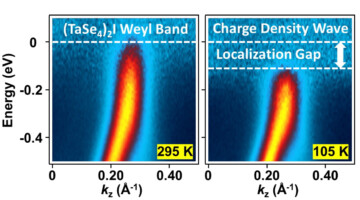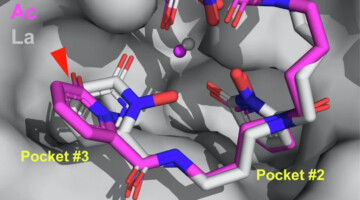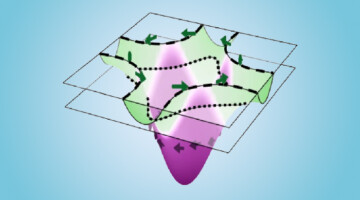A new lab-wide chemical safety policy requires that all chemicals be reviewed and approved before they arrive at LBNL. As a user of the ALS, you must provide a complete list of chemicals you want to send or bring to the ALS and wait until you receive approval before you proceed. Chemicals that arrive without approval may be returned to the sender. For details on what is considered a chemical under this policy and instructions for obtaining approval, please see the ALS chemical safety webpage. Read more »
All News & Updates
Operando Unveiling of Hydrogen Spillover Mechanisms on Tungsten Oxide Surfaces
An artistic depiction of hydrogen spillover on Pt/WO3, illustrating H2 activation and dissociation on Pt metal clusters, followed by hydrogen migration to WO3 for water formation. At elevated temperatures, water desorption and surface-to-bulk diffusion of hydrogen drive tungsten redox and oxygen vacancy formation on the surface of WO3. Read more »
Whitney Loo, 2025 Users’ Executive Committee Chair
The ALS was a major selling point when Whitney Loo chose where to pursue her PhD. Now that she runs her own research group at the University of Wisconsin-Madison, she is maintaining her ties and giving back to the ALS community by serving on the UEC. Read more »
Structure of the human autophagy factor EPG5 and the molecular basis of its conserved mode of interaction with Atg8-family proteins
The study reports the first structure of human EPG5 (HsEPG5) determined by cryo-EM and AlphaFold2 modeling. Read more »
Hendrik Ohldag Elected Fellow of IEEE
Hendrik Ohldag has been elected as a 2025 fellow of IEEE (originally chartered as the Institute of Electrical and Electronics Engineers). The Board of Directors recognizes him “for contributions to studies of magnetic materials with novel x-ray techniques at high spatio-temporal resolution.”
Native American Interns Explore Engineering Opportunities at the Lab
This last summer, Berkeley Lab hosted three students from Navajo Technical University in a DOE-funded initiative that partners national labs with learning institutions whose populations are historically underrepresented in science. The goal is to increase enrollment of Native American students in Navajo Tech engineering programs. Read more »
Not All Gaps Are Created Equal
Researchers found that charge density waves (CDWs) in topological materials induce unconventional spectral gaps in the materials’ electronic structure. The finding that CDWs in topological materials can be essentially different from those in other materials should be carefully considered when designing quantum devices. Read more »![]()
A Macromolecular Scaffold for Probing Actinium Chemistry
By encapsulating actinium atoms within a macromolecular complex for analysis using protein crystallography, researchers discovered that actinium has a unique solid-state bonding configuration. A better understanding of actinium behavior could help improve a promising cancer treatment known as targeted alpha therapy. Read more »![]()
![]()
Lattice-Dependent Spin Textures in High-Tc Superconductors
Researchers found that in bismuth-based cuprate superconductors, charge imbalances caused by lattice distortions generate persistent and universal patterns of spin polarization. The results supply a previously missing but essential ingredient in efforts to understand the mechanisms driving the electronic behavior of high-temperature superconductors. Read more »![]()
![]()
Excited States in CO2 Clusters Shed Light on Astrochemical Formation Mechanisms
A vacuum ultraviolet photoionization study conducted at the ALS revealed a new mechanism between molecules that converts high-energy ultraviolet light into free electrons. The results provide insights into interactions between CO2 and organic molecules, which are crucial for understanding astrochemical interactions as well as green chemistry and renewable energy development. Read more »
- « Previous Page
- 1
- …
- 7
- 8
- 9
- 10
- 11
- …
- 140
- Next Page »
